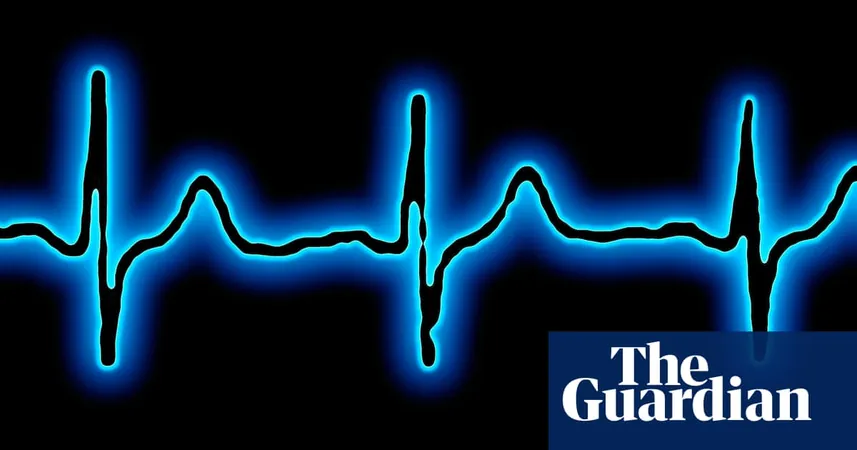
Are Women Being Ignored? Outdated HCM Guidelines Put Lives at Risk!
2025-01-08
Author: Ting
In a shocking revelation that could shift the landscape of cardiac care, recent research indicates that doctors are failing to diagnose a potentially lethal heart condition, hypertrophic cardiomyopathy (HCM), in women due to outdated diagnostic guidelines rooted in studies from the 1970s. This critical oversight is placing countless lives in jeopardy, as the standards used to assess heart health don't adequately consider the natural variances in sex and body size.
Understanding HCM and Its Implications
HCM, which occurs when the muscular wall of the heart thickens, affects approximately one in 500 individuals. This serious condition can lead to cardiac arrest and, tragically, sudden death. Alarmingly, while two-thirds of diagnosed HCM patients are men, new findings suggest that women are just as likely to be afflicted, yet remain largely undiagnosed.
Research Breakthroughs and New Guidelines
Researchers funded by the British Heart Foundation made a compelling case for revising these antiquated frameworks. Their findings, published in the prestigious Journal of the American College of Cardiology, utilized artificial intelligence to analyze thousands of heart scans, enhancing the precision of HCM identification, particularly among women, by a staggering 20 percentage points.
The traditional diagnostic threshold has been set at 15mm for heart wall thickness—a numerical benchmark that, for fifty years, has applied uniformly across genders and body types. This approach fails to account for physiological differences that impact heart health. The innovative research examined 1,600 patients with HCM and established new personalized diagnostic criteria based on age, sex, and body size.
Impacts of New Findings
The implications of this study are profound. By considering individual characteristics, the updated method not only decreased the overall number of HCM diagnoses, suggesting a reduction in misdiagnosis but also highlighted a more balanced gender distribution in diagnoses—44% of those identified were women. Dr. Hunain Shiwani, who led the research out of University College London and St Bartholomew’s Hospital, stated, “Our research provides a long-overdue update demonstrating that a personalized approach improves diagnosis accuracy. Effective treatments are now available for HCM, and we cannot afford to overlook anyone who may need them.”
Addressing Healthcare Disparities
Moreover, Dr. Sonya Babu-Narayan of the British Heart Foundation emphasized that the lack of diagnosis could mean that many individuals who would benefit from groundbreaking therapies are slipping through the cracks. "According to our findings, the current guidelines not only hinder timely and effective treatment but also represent a major healthcare disparity.”
Conclusion: A Call to Action
This revelation raises urgent questions about how we address women's health in cardiology. It urges both patients and providers to be vigilant and proactive about potential heart conditions, particularly in women who may present differently than the traditional patient population.
As this critical conversation unfolds, it’s clear that reframing how we diagnose HCM is not just a recommendation—it's a medical necessity that could save lives. How many women are out there suffering in silence, their symptoms dismissed? The time is now for healthcare specialists to take action and adapt to new findings in the quest to better identify and treat hypertrophic cardiomyopathy. Don't wait until it’s too late!

 Brasil (PT)
Brasil (PT)
 Canada (EN)
Canada (EN)
 Chile (ES)
Chile (ES)
 Česko (CS)
Česko (CS)
 대한민국 (KO)
대한민국 (KO)
 España (ES)
España (ES)
 France (FR)
France (FR)
 Hong Kong (EN)
Hong Kong (EN)
 Italia (IT)
Italia (IT)
 日本 (JA)
日本 (JA)
 Magyarország (HU)
Magyarország (HU)
 Norge (NO)
Norge (NO)
 Polska (PL)
Polska (PL)
 Schweiz (DE)
Schweiz (DE)
 Singapore (EN)
Singapore (EN)
 Sverige (SV)
Sverige (SV)
 Suomi (FI)
Suomi (FI)
 Türkiye (TR)
Türkiye (TR)
 الإمارات العربية المتحدة (AR)
الإمارات العربية المتحدة (AR)